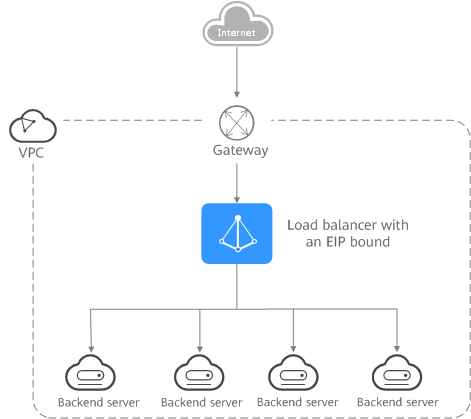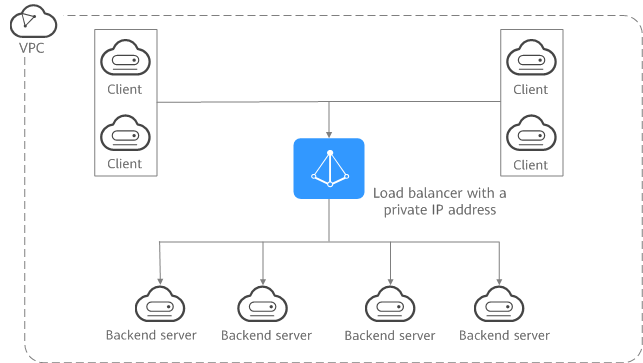Load Balancing on a Public or Private Network
A load balancer can work on either a public or private network.
Load Balancing on a Public Network
You can bind an EIP to a load balancer so that it can receive requests from the Internet and route the requests to backend servers.

Load Balancing on a Private Network
A load balancer has only a private IP address to receive requests from clients in a VPC and routes the requests to backend servers in the same VPC. This type of load balancer can only be accessed in a VPC.

Network Types and Load Balancers
|
Load Balancer Type |
Network Type |
Description |
|---|---|---|
|
Dedicated load balancers |
Public IPv4 network |
Each load balancer has an IPv4 EIP bound to enable it to route requests over the Internet. |
|
Private IPv4 network |
Each load balancer has only a private IPv4 address and can route requests in a VPC. |
|
|
IPv6 network |
Each load balancer has an IPv6 address bound.
|
|
Load Balancer Type |
Network Type |
Description |
|---|---|---|
|
Shared load balancers |
Public IPv4 network |
Each load balancer has an EIP bound to enable it to route requests over the Internet. |
|
Private IPv4 network |
Each load balancer has only a private IP address and can route requests in a VPC.
NOTE:
Shared load balancers support private IPv4 networks by default. The private IP address of a shared load balancer cannot be changed. |
Feedback
Was this page helpful?
Provide feedbackThank you very much for your feedback. We will continue working to improve the documentation.






